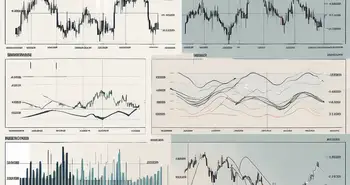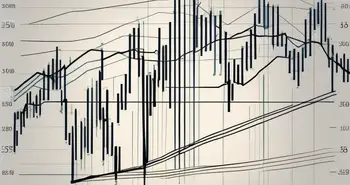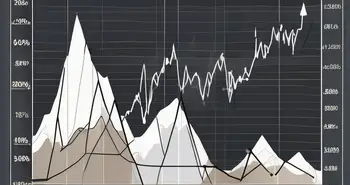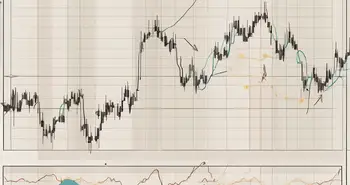Understanding the Average True Range: A Comprehensive Guide
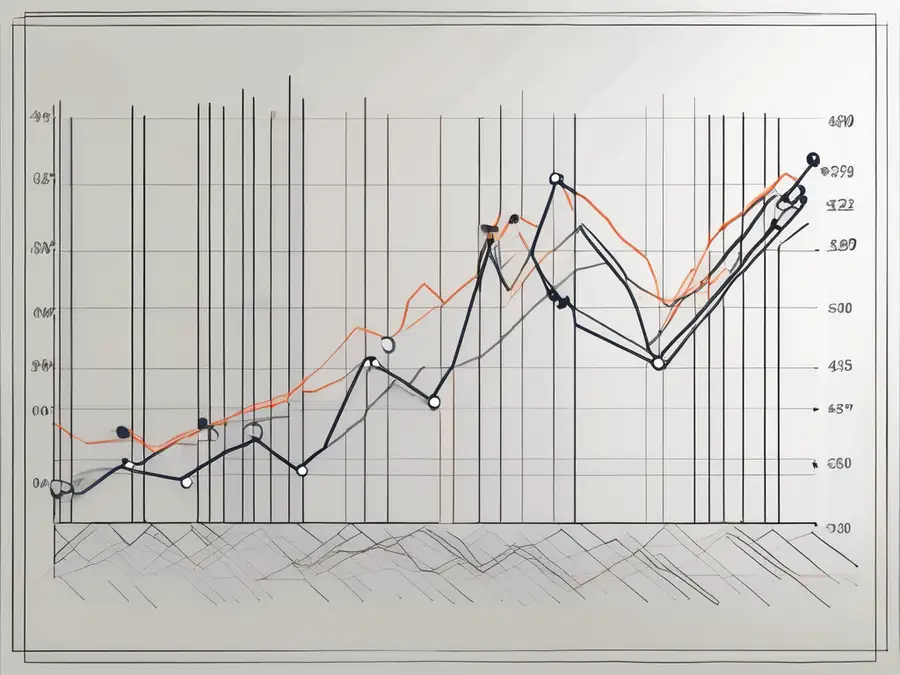
As an expert in trading and market analysis, I am here to provide you with a comprehensive guide on understanding the Average True Range (ATR). Whether you are new to trading or looking to enhance your strategies, the ATR is a critical tool for measuring market volatility and managing risk.
Defining the Average True Range (ATR)
Before delving into the specifics, let's first establish what the Average True Range is. In simple terms, it is a technical indicator that measures the volatility of a market or instrument over a given period. Unlike other indicators that focus solely on price movements, the ATR takes into account gaps and limit moves, making it a more reliable measure of volatility.
Volatility refers to the degree of variation in an instrument's price over a specific period. Traders often look for volatile markets as they present more opportunities for profitable trades. Understanding volatility and how it affects your chosen trading strategy is crucial for success in the financial markets.
When it comes to trading, volatility can be both a friend and a foe. On one hand, high volatility can lead to significant price swings, allowing traders to profit from large moves. On the other hand, excessive volatility can also increase the risk of sudden and unexpected price reversals, catching traders off guard.
The Average True Range (ATR) helps traders gauge the level of volatility in a market. It provides a numerical value that represents the average range between the high and low prices of an instrument over a specific period. By knowing the average range of price movement, traders can better assess the potential risk and reward of a trade.
Behind the scenes, the ATR is calculated using a simple mathematical formula. However, it's important to note that as a trader, you don't need to perform this calculation manually. Trading platforms and charting software will provide instant access to the ATR value for the time frame you're interested in.
The ATR formula involves calculating the true range for each period, which is the highest value among the following three calculations:
- The difference between the current period's high and low prices
- The absolute value of the difference between the current period's high and the previous period's close
- The absolute value of the difference between the current period's low and the previous period's close
Once the true range is calculated for each period, the ATR is obtained by taking the average of these true range values over the desired time frame. This average is typically smoothed using a moving average calculation to provide a more stable and readable ATR value.
By incorporating the ATR into their analysis, traders can gain valuable insights into the volatility of a market. This information can be used to set appropriate stop-loss levels, determine position sizes, and identify potential breakout opportunities.
It's worth noting that the ATR is not a directional indicator. It does not provide information about the future direction of prices. Instead, it focuses solely on volatility. Therefore, it is often used in conjunction with other technical indicators and analysis techniques to make informed trading decisions.
In conclusion, the Average True Range (ATR) is a powerful tool for traders to measure and analyze market volatility. By understanding the concept of volatility and how it affects trading, and by utilizing the ATR in their analysis, traders can enhance their decision-making process and improve their overall trading performance.
The Importance of Average True Range in Trading
Now that we grasp the concept of ATR, let's explore why it is a vital tool in trading. The ATR serves two essential purposes: measuring market volatility and aiding risk management.
ATR as a Measure of Market Volatility
The ATR helps traders gauge the level of volatility in a particular market or instrument. By knowing the magnitude of price swings, traders are better equipped to adjust their strategies accordingly. Higher ATR values indicate greater volatility, while lower values suggest a calmer market.
Using ATR for Risk Management
Effective risk management is a cornerstone for any successful trader. The ATR is invaluable in this regard, as it provides crucial insights into setting stop-loss levels and determining position sizes. By factoring the ATR into your risk management strategy, you can align your trades with your risk tolerance and increase the likelihood of profitable outcomes.
How to Calculate Average True Range
Now that we understand the importance of the ATR, let's take a closer look at how it's calculated. Although you don't need to perform the calculation manually, understanding the process can further deepen your understanding of this valuable indicator.
Step-by-Step Calculation of ATR
The ATR calculation involves several steps, including finding the true range, calculating the average true range, and applying a smoothing mechanism. However, thanks to modern trading platforms, you can access the ATR value instantly without the need for manual calculations.
Understanding the Output of ATR Calculation
When you access the ATR value on your trading platform, you will notice that it is displayed as a numeric figure. This number represents the average value of price movements over the specified time period. The unit of measurement will depend on the underlying instrument, such as points for stocks or pips for forex pairs.
Interpreting Average True Range Values
Now that we have covered the calculation and significance of the ATR, it's time to explore how to interpret the values provided by this indicator.
What High ATR Values Indicate
High ATR values suggest increased volatility, indicating larger price swings within the specified time frame. For active traders seeking profit potential in volatile markets, high ATR values can provide attractive trading opportunities.
What Low ATR Values Suggest
Conversely, low ATR values signal decreased volatility, implying smaller price movements. Traders who prefer calmer, more predictable markets may find low ATR values align better with their trading style.
Incorporating Average True Range into Trading Strategies
Now that you understand how to interpret ATR values, let's explore how you can incorporate this powerful indicator into your trading strategies.
ATR in Trend Following Strategies
Trend following strategies aim to capitalize on the momentum of a market. By incorporating the ATR into these strategies, traders can determine suitable stop-loss levels and profit targets based on the current volatility. This enables traders to stay in profitable trades longer and exit at the optimal time.
ATR in Swing Trading Strategies
Swing trading involves capturing shorter-term price swings within a larger trend. The ATR can help identify suitable entry and exit points by providing insight into the potential magnitude of price moves. By adjusting position sizes based on ATR values, swing traders can optimize risk and reward ratios.
As an expert in trading, I have witnessed firsthand how the ATR can significantly enhance trading strategies. By incorporating this powerful indicator into your analysis and risk management approach, you can gain a competitive edge in the financial markets.
FAQ
What is the Average True Range (ATR)?
The Average True Range (ATR) is a technical indicator that measures the volatility of a market or instrument over a given period.
How is the Average True Range Calculated?
The ATR calculation involves finding the true range, calculating the average true range, and applying a smoothing mechanism. However, modern trading platforms provide instant access to the ATR value without manual calculations.
Why is Average True Range Important for Traders?
The ATR is crucial for traders as it measures market volatility and aids in risk management. It provides insights into setting stop-loss levels, determining position sizes, and adjusting strategies based on market conditions.
How Can I Use Average True Range in My Trading Strategies?
You can leverage the ATR in various trading strategies, such as trend following or swing trading. By incorporating ATR values, you can establish suitable entry and exit points, optimize risk-reward ratios, and align your trades with market volatility.
What Do High and Low Average True Range Values Indicate?
High ATR values suggest increased volatility, providing potential trading opportunities for those seeking larger price swings. On the other hand, low ATR values suggest decreased volatility, indicating calmer and more predictable markets.
Now that you have gained a comprehensive understanding of the Average True Range (ATR), I encourage you to explore how this valuable tool can enhance your trading. By incorporating the ATR into your analysis and strategies, you can navigate the dynamic nature of the financial markets with confidence and precision.
Ready to put your newfound knowledge of the Average True Range (ATR) into action? Look no further than Morpher, the revolutionary trading platform that leverages blockchain technology to offer you a unique and empowering trading experience. With Morpher, you can trade a vast array of assets, from traditional stocks and forex to cutting-edge markets like NFTs, without the burden of fees or the constraints of liquidity. Embrace the power of fractional investing, benefit from 10x leverage, and enjoy the safety of a non-custodial wallet. Sign Up and Get Your Free Sign Up Bonus today to start trading with precision and freedom.

Disclaimer: All investments involve risk, and the past performance of a security, industry, sector, market, financial product, trading strategy, or individual’s trading does not guarantee future results or returns. Investors are fully responsible for any investment decisions they make. Such decisions should be based solely on an evaluation of their financial circumstances, investment objectives, risk tolerance, and liquidity needs. This post does not constitute investment advice.

Painless trading for everyone
Hundreds of markets all in one place - Apple, Bitcoin, Gold, Watches, NFTs, Sneakers and so much more.

Painless trading for everyone
Hundreds of markets all in one place - Apple, Bitcoin, Gold, Watches, NFTs, Sneakers and so much more.

